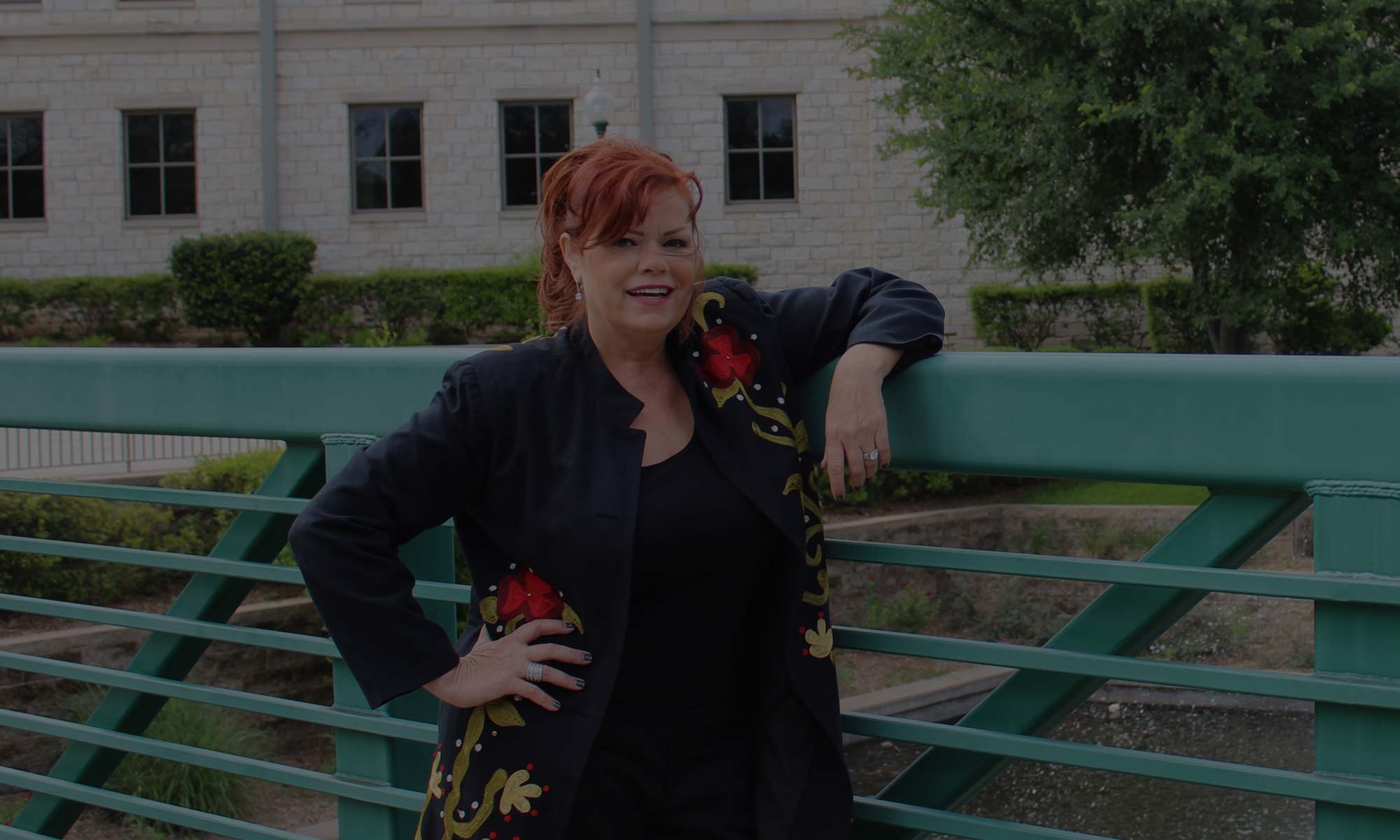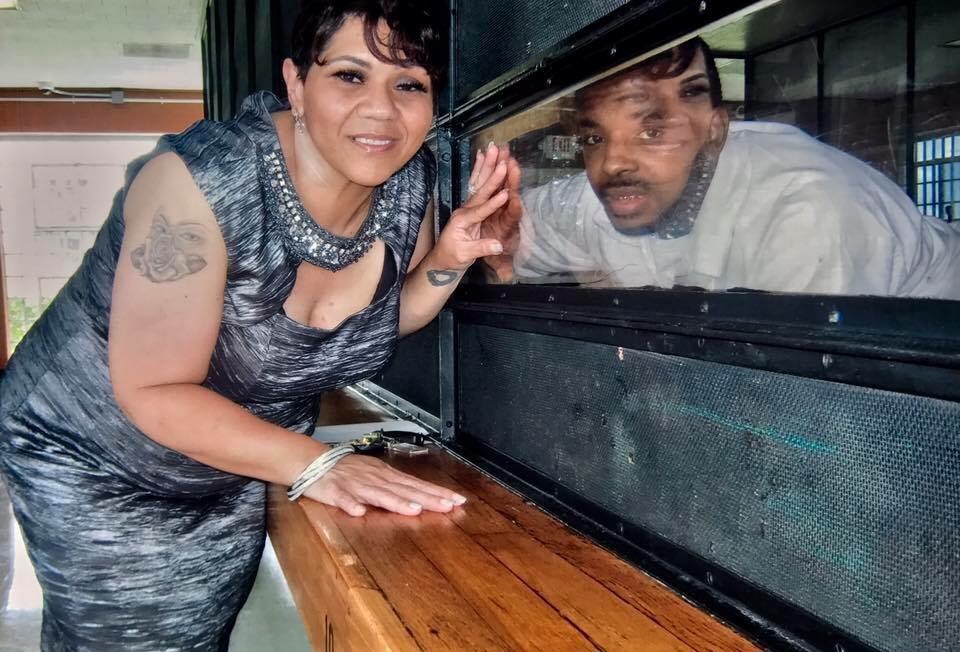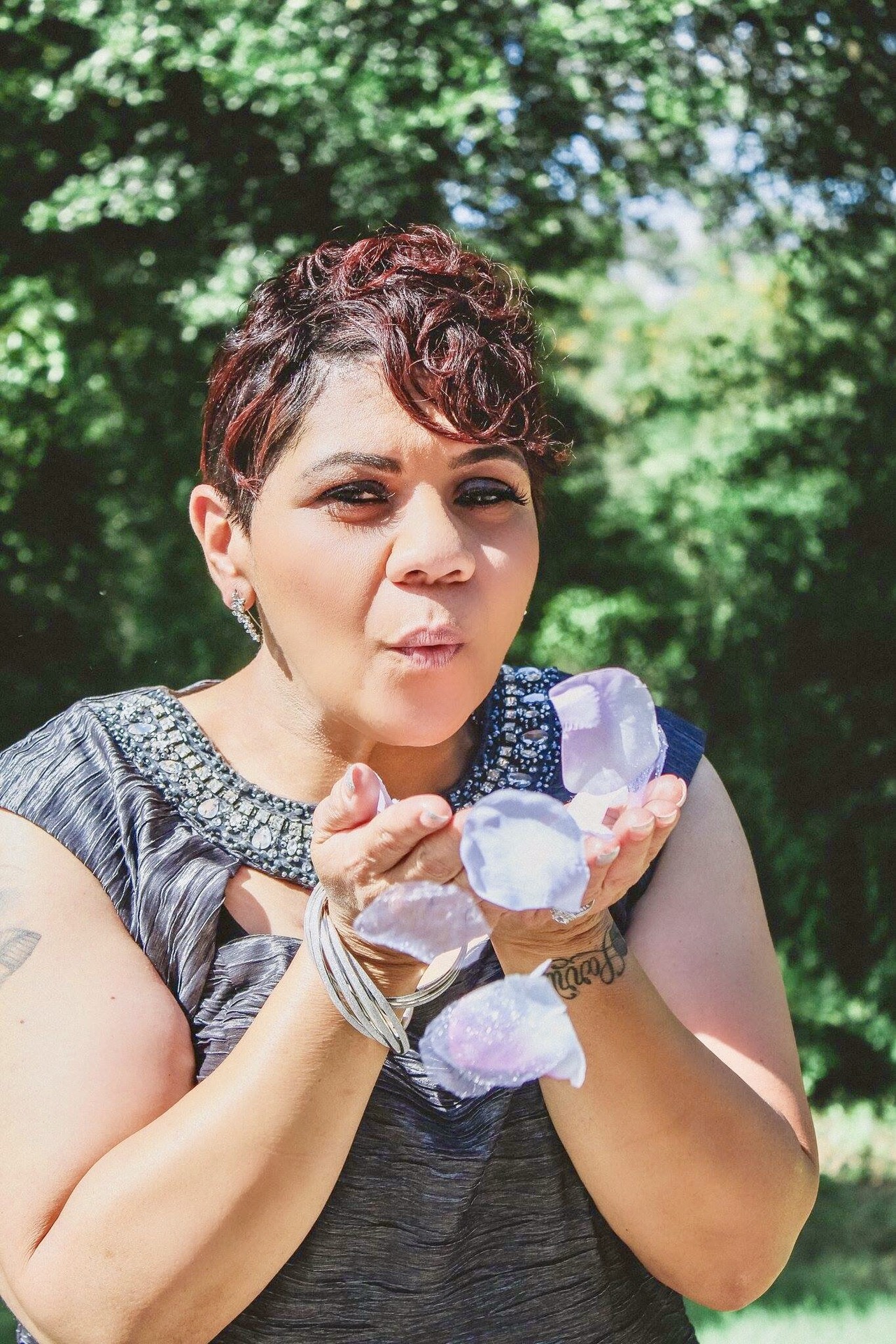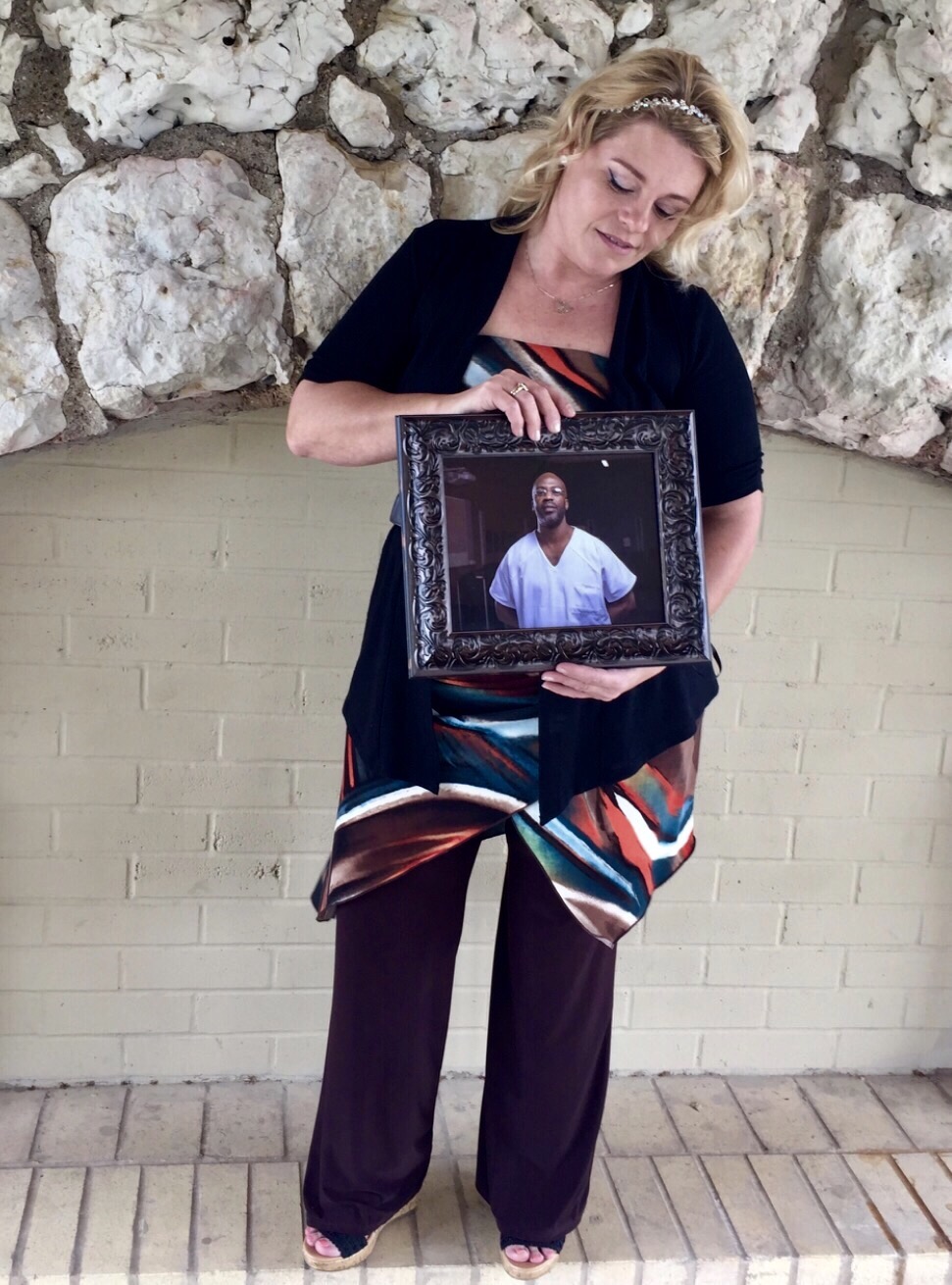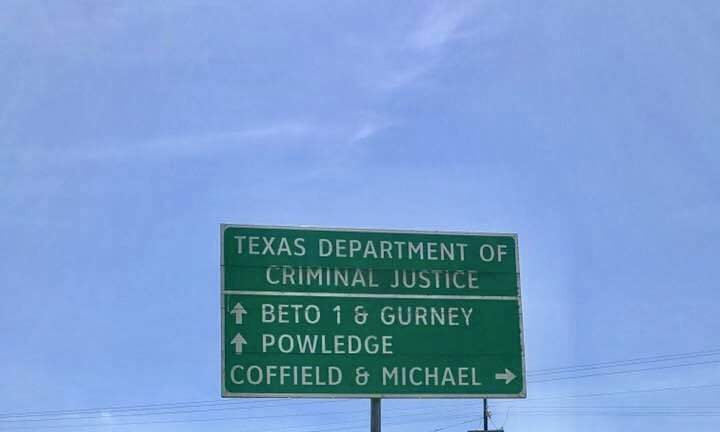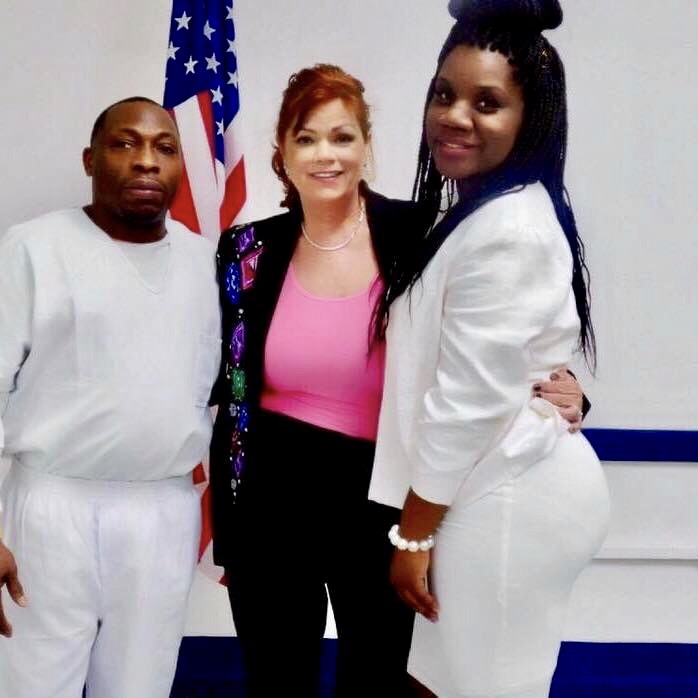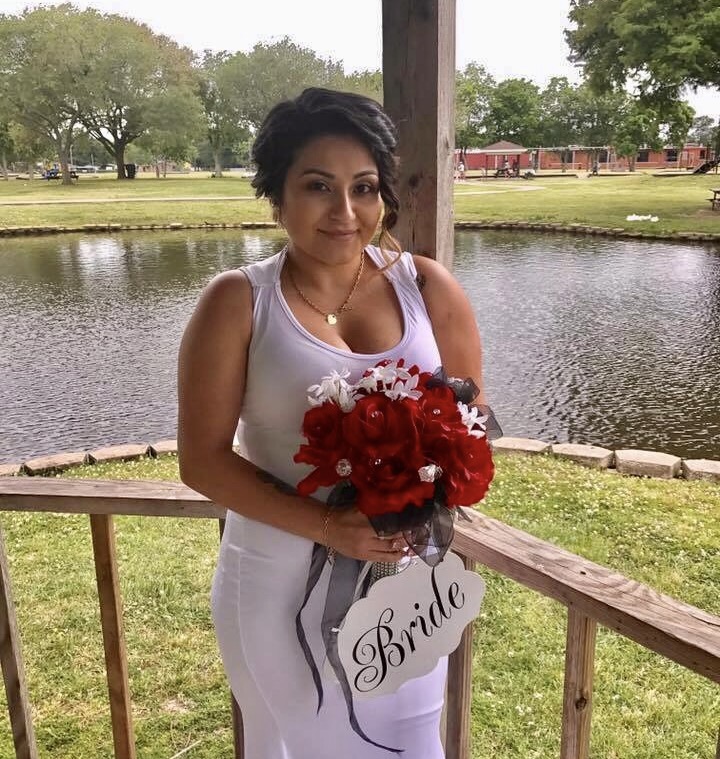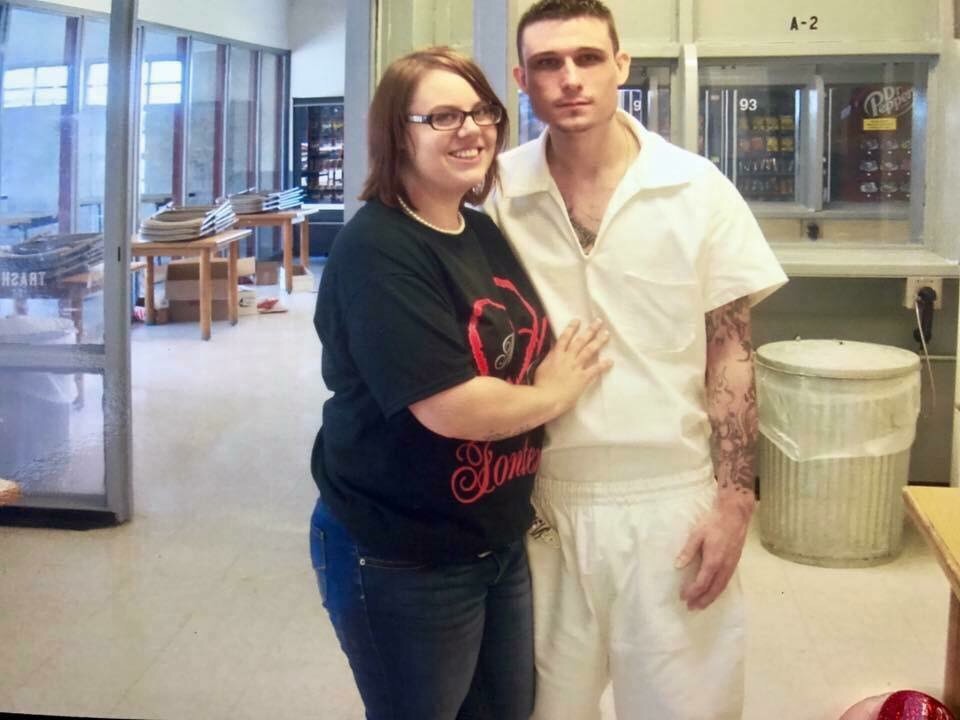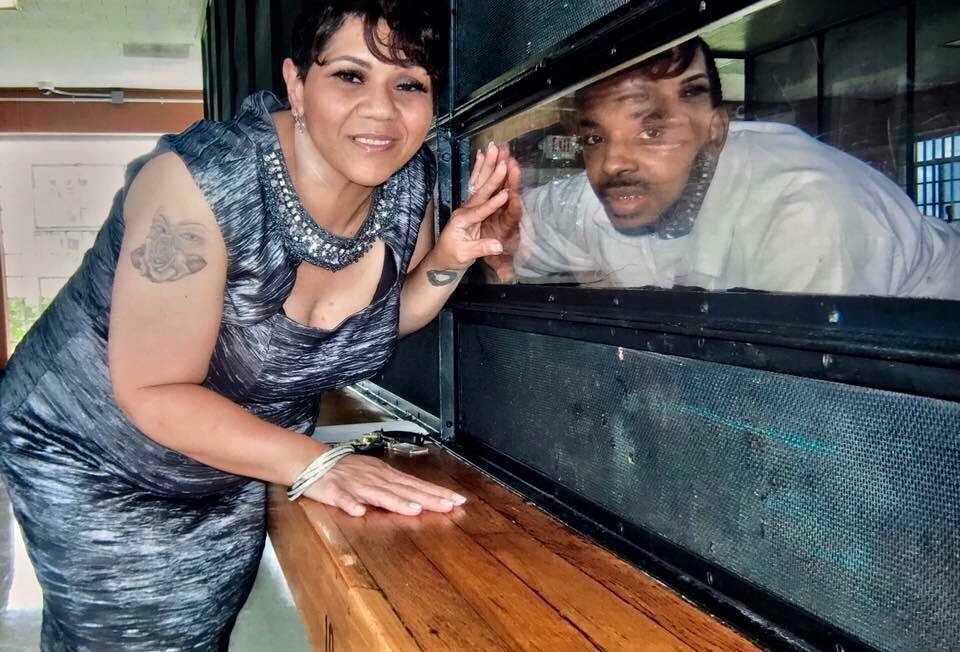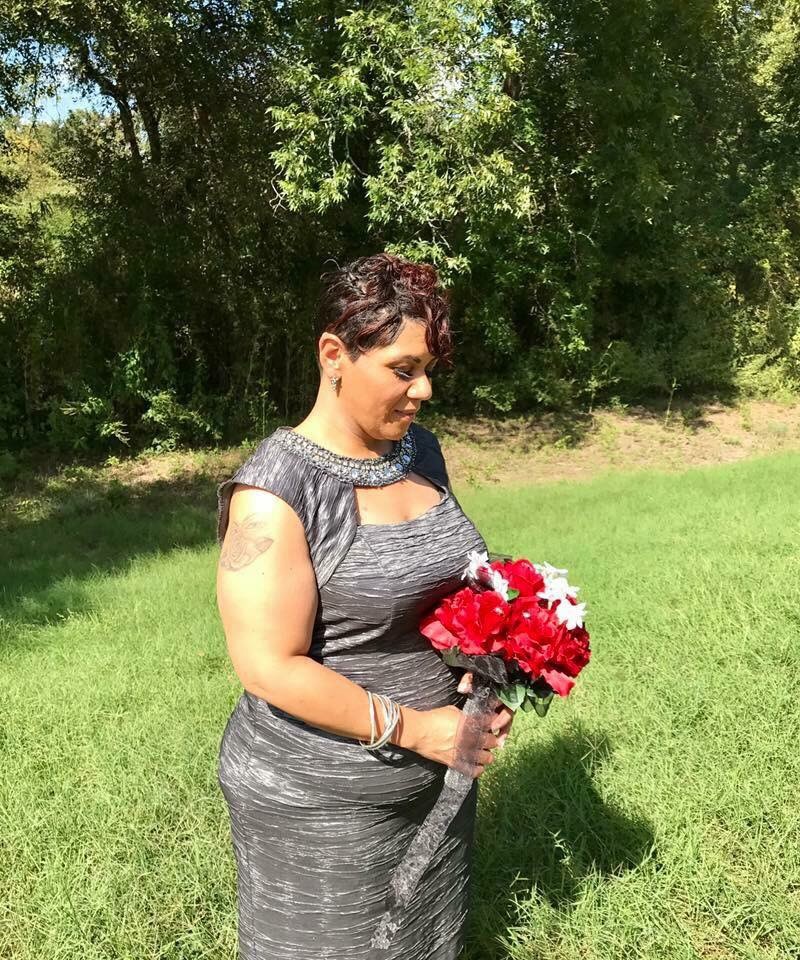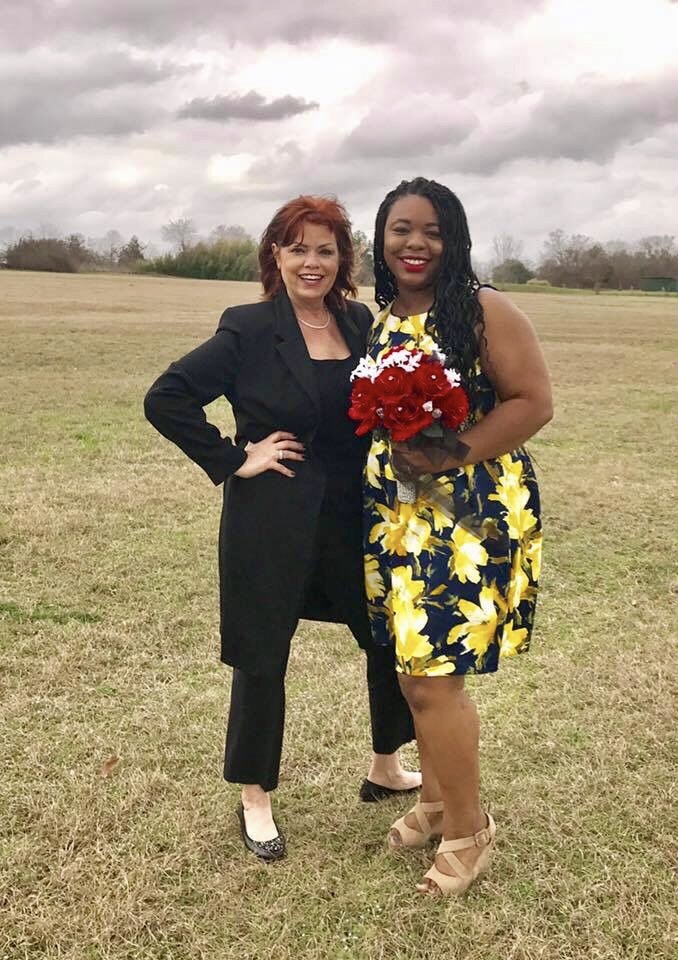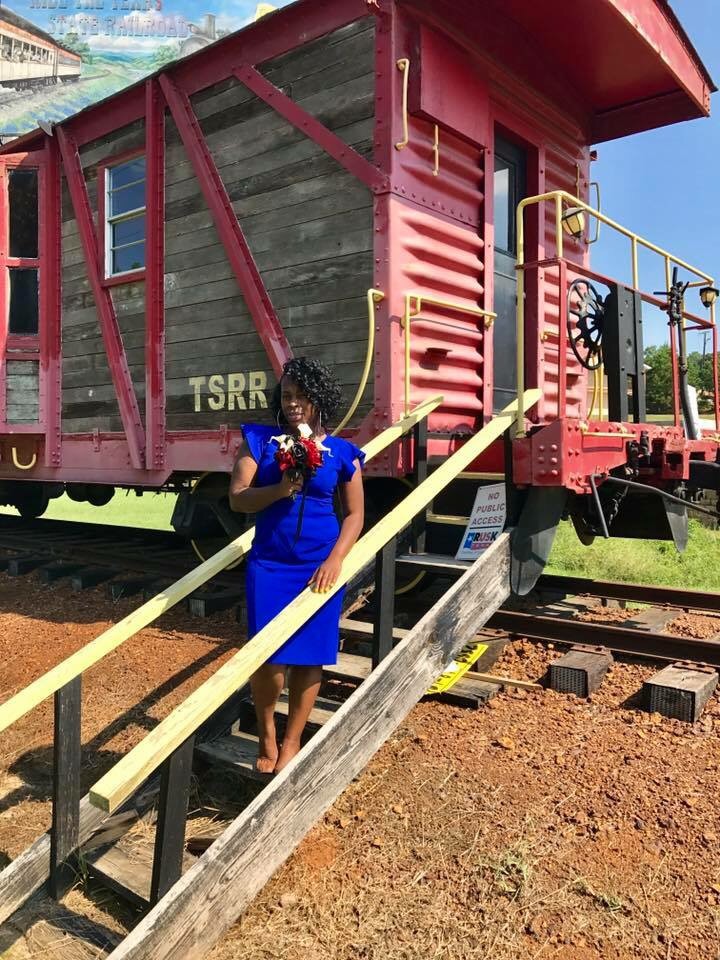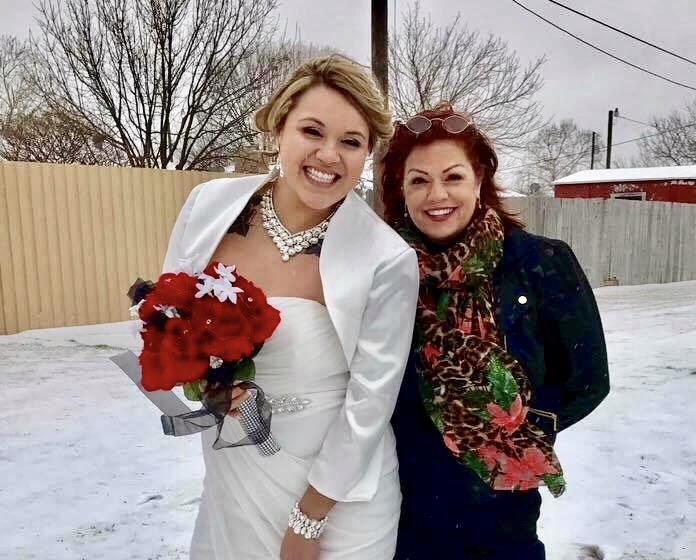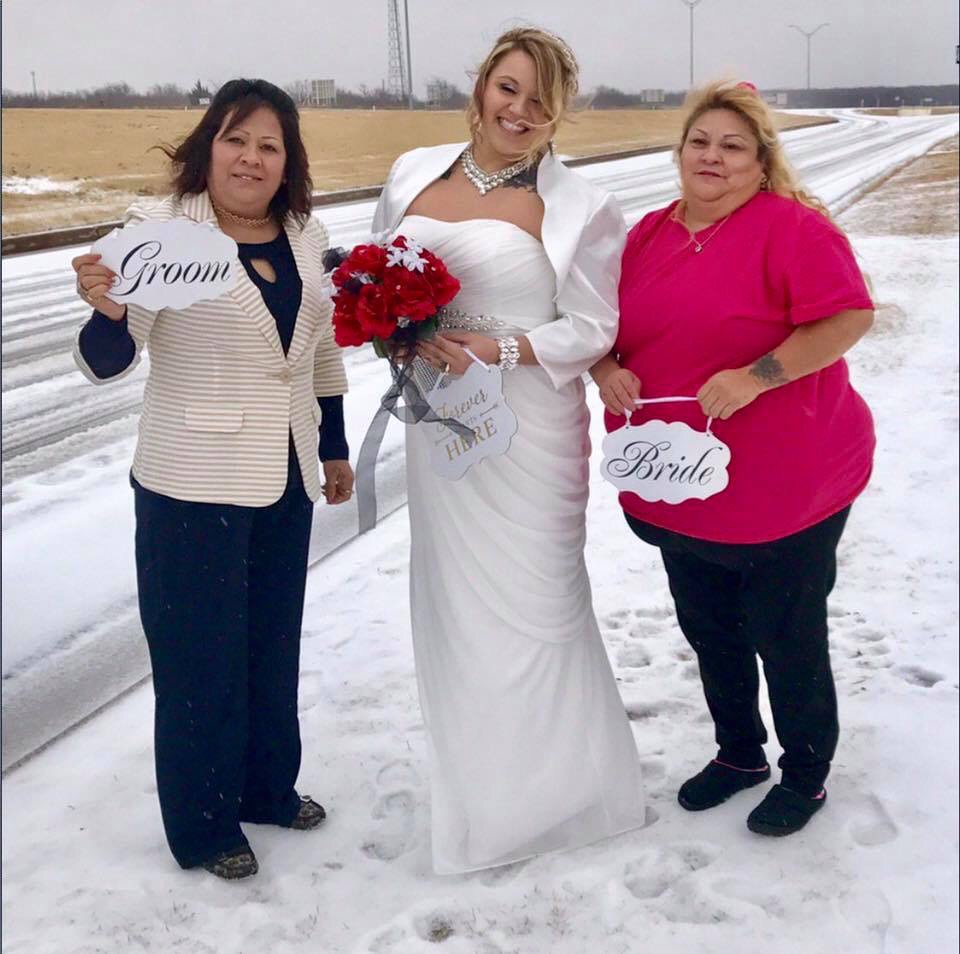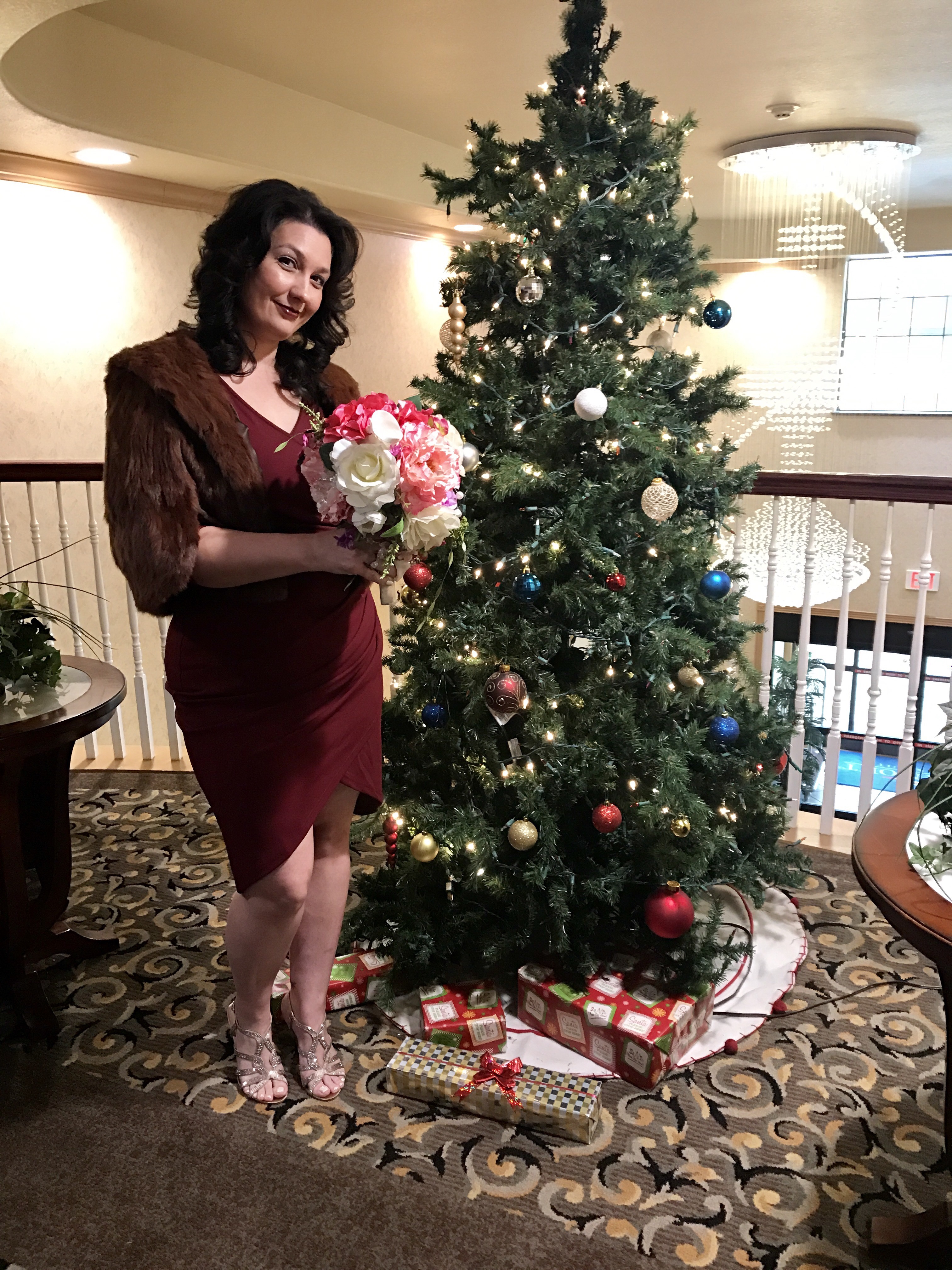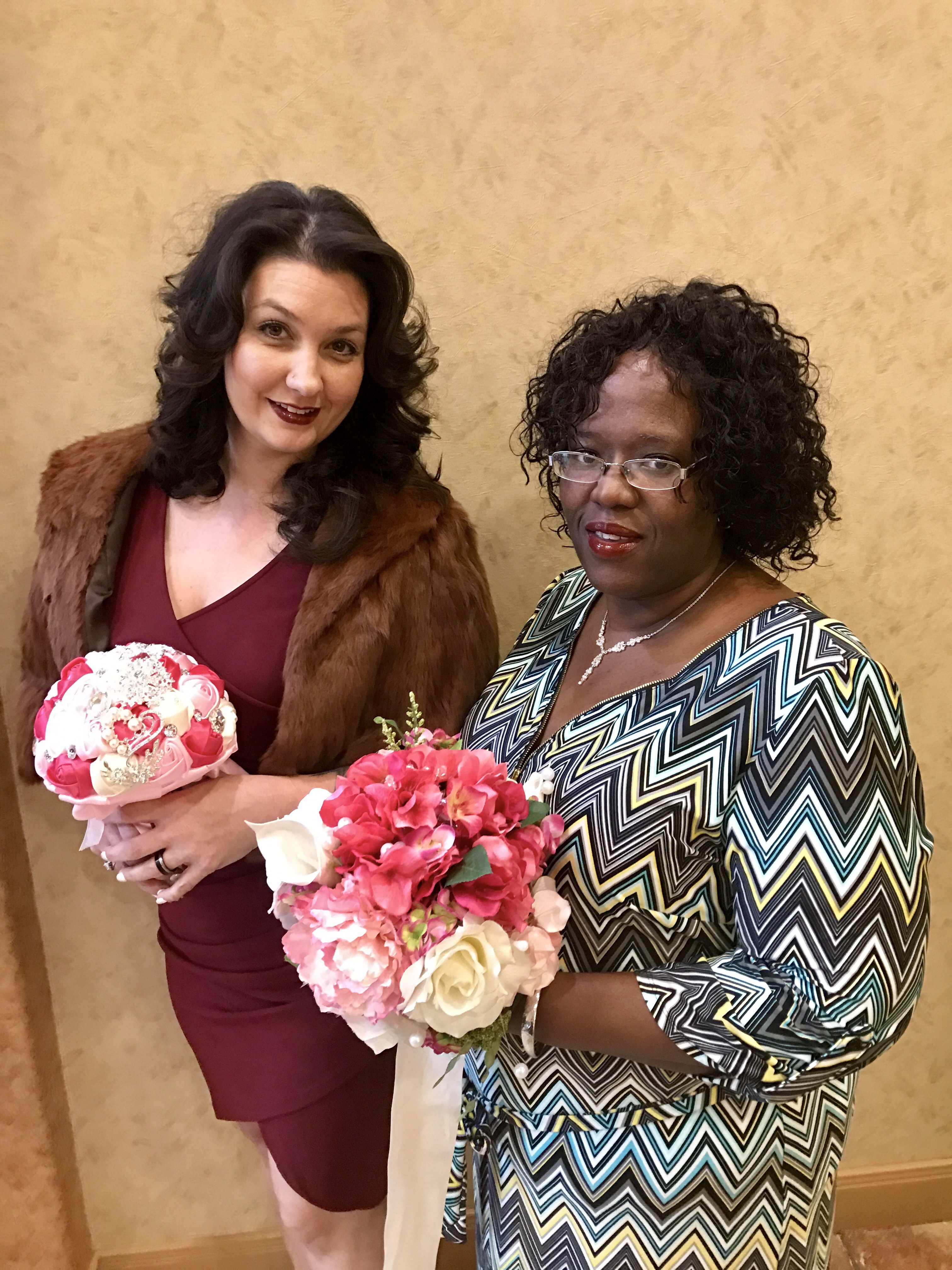In my opinion, inmate phone calls are ridiculously expensive and I should know. My niece was incarcerated in Cotton County five years ago. This would be my first “hint” to the expensive phone calls to my twin sister or I.
From setting up a phone account, to the actual charge per minute, these phone calls are a hefty expense. Did my niece realize she was costing her mother and I hundreds of dollars a month to call home? I doubt it but, as we wait for her to be transferred from JPS/LCA to Parker County Jail, we are buckling up for more months of expensive phone calls.
Having a conversation with my niece who wants to call home several times a day while also wanting money on her books and expecting my sister to pay her probation fees to Cotton County, a discussion was in order regarding “entitlement.” My niece is 31 years old and for nearly a year and a half now, expects her mother to continue paying her bills. Numerous traffic violations and losing her car have added on the expenses for my niece. Although she is complaining about not having a car, my niece should be focusing on finding work to pay her massive fees.
Parents and loved ones alike take on a heavy burden when it comes to phone calls but, video visits seem be more popular these days for County Jails than phone calls. My niece prefers to call her mother or I and I’m looking in to the cost of video versus phone calls. Hundreds of dollars in calls a month as well as money on the books adds up and quickly.
The flip side of inmate phone calls is video visitation. I don’t believe you can replace the human contact of a visit with video but, a number of county Jails are doing just that. I’ve visited my niece is County Jails for over twelve years now. It’s not easy trying to cheer someone up in Jail but after 13 involuntary commitments, visiting my niece in a mental institute is equally taxing for me. I’ve also had to visit my father in a mental institution and my grandniece.
Quite frankly, my Pom Poms are losing their streamers these days. My family have no idea the amount of stress they bring to the table. Work is my salvation.
Video visitation continues to be an issue for prospects contacting me to Officiate a County Jail Wedding at a Unit that ONLY allows video conferencing.
I will not conduct a ceremony via video for a number of reasons but mainly because video, cell phone or other forms of communication aren’t a legally binding ceremony. Why? Unless it’s a Proxy Marriage, the internet is not a legal entity. Communicating via the internet to marry might sound like a good idea but, it isn’t.
My clients are always right in front of me whether they are separated by a glass partition or not.
Prior to the Administrative Directive in Texas, inmate marriages were not allowed unless they were performed by Proxy. The Administrative Directive changed all of that.
Proxy Marriage is no longer allowed in Texas Prisons. Proxy Marriage is also highly controversial to such an extent that many states no longer allow it.
In the United States, proxy marriages are provided for in law or by customary practice in Texas, Colorado, Kansas, and Montana Of these, Montana is the only state that allows double-proxy marriage. Proxy marriages cannot be solemnized in any other U.S. states.
On July 28, 2015, the TDCJ revised Administrative Directive AD-03.42, concerning prisoner marriages. Under the revised policy, prison officials “shall permit offenders to be married on TDCJ property or contracted facilities.” Each prison “shall provide two non-visitation workdays per month for offenders to be married in the visitation area of the offender’s assigned unit.” Marriages between two prisoners are not permitted, ceremonies can not be held in prison chapels, nor can a non-incarcerated spouse bring in a wedding ring to give to the prisoner they are marrying.
Offenders who are eligible for contact visits shall be allowed to hold hands during the ceremony and can share “a brief embrace and kiss at the end of the process.”
Administrative Directive AD-03.42 made inmate Proxy Marriage a thing of the past. For two years, I’ve been officiating Prison Weddings. Long before that though, I officiated County Jail Weddings.
I’m not interested in why an inmate is in custody since it’s the first question anyone who realizes that I Officiate inmate weddings ask me. It’s not for me or anyone else to judge.
There are differences when it comes to a County Jail or Prison Wedding Ceremony. The main difference being that only a TDCJ Approved Officiant is authorized to conduct the ceremony.
County Jails have no such limitations. The only requirement for a County Jail Wedding is that the Officiant be authorized to conduct a marriage ceremony.
Prison Wedding Planning is a process. There is paperwork to be filed and the Prison Unit must give permission for couples to marry.
County Jails and prisons both have dress codes in force to visitors. Be aware of this. You CANNOT “wear whatever you want” to an inmate wedding whether it’s in a County Jail, State Prison or Federal Prison.
If an inmate is behind glass, they can hear and understand the ceremony. Depending on the level of custody, certain inmates may be restricted to their cells. Let’s look at custody levels.
S1 (Often called Trustee one or Stat one)
S2 (Often called Trustee two or Stat two)
S3 (Often called Trustee three or Stat three)
S4 (Often called Trustee four or Stat four)
There are only a handful of S1’s in all of TDCJ. For most prisoners S2 is as high as they will go. For some crimes (homicides in particular) S3 is as high as the prisoner can go.
Generally, unit disciplinary cases are the cause of a prisoner dropping in class. Prisoners generally rise in class levels by serving their time case free. How often and how many class levels a prisoners rises is a decision made by unit authorities. As a rule of thumb a prisoner usually rises one or two classes at a time and reclassifications occur between every six months and every year.
Prisoners have to reach the line class they entered into the TDCJ system as in order to become eligible for parole again. So if the prisoner entered as a Trusty IV and unit disciplinary case brought him down to a Line III, he will have to continue to have good disciplinary till he reclasses to a Trusty IV.
G1 General Population Level 1 (Previously Minimum-Out)
G2 General Population Level 2 (Previously Minimum-In)
G3 General Population Level 3 (If offender has a sentence of 50 years or greater, 3G must serve 10 flat and non 3G must serve 5 flat, to move to a less restrictive custody; job and housing assignments will be restricted.)
G4 General Population Level 4 (Previously Medium)
G5 General Population Level 5 (Previously Close-Custody)
The G3 custody is what is being called the “new custody” and it is primarily utilized for those offenders with lengthy sentences who have not served a significant amount of time.
An offender who is assigned to G3 custody will not be allowed to live in dormitories that are outside of the main building of a facility. They may not be assigned to jobs such as maintenance, back door worker, SSI, any clerk position, or any job where the offender would have access to multiple areas of the facility. This custody will retain the same privileges as a G2 offender (currently MI).
The guidelines are as follows:
50 year 3G (murder, capital murder, indecency with a child, aggravated kidnapping sexual assault, aggravated sexual assault, aggravated robbery, health and safety code, chapter 481.134 (d), (d) and (f), and any offense with affirmative findings for use of a deadly weapon) will be required to serve 10 flat years before they are eligible to promote to a custody less restrictive than G3.
50 year non 3G offenses will be required to serve 5 flat years before they are eligible to promote to a custody level less restrictive than G3.
II. UNIT CLASSIFICATION
A. Custody Levels On the unit of assignment, an offender is given a custody designation which indicates several things. It tells where and with whom he can live, how much supervision he will need, and what job he can be assigned to.
An offender’s custody level depends on his current institutional behavior, his previous institutional behavior, and his current offense and sentence length.
If he (or she) violates rules, he (or she) will be placed in a more restrictive custody. If he (or she) complies with the rules, he (or she) will be assigned a less restrictive custody level.
Institutional Offender Custody Levels:
1. Administrative Segregation
2. General Population Level 5 (G5)
3. General Population Level 4 (G4)
4. General Population Level 3 (G3)
5. General Population Level 2 (G2)
6. General Population Level 1 (G1)
State Jail Offender Custody Levels:
1. Special Management
2. General Population Level 5 (J5)
3. General Population Level 4 (J4)
4. General Population Level 2 (J2)
5. General Population Level 1 (J1) Administrative Segregation or Special Management refers to offenders who must be separated from the general population because they are dangerous, either to other offenders or staff, or they are in danger from other offenders.
Additionally, offenders who, according to the SCC, are members of security threat groups designated by TDCJ may be given this custody level.
These offenders leave their cells, for the most part, only for showers and limited recreation. (Offenders assigned to Administrative Segregation in expansion cellblocks shower in their cells.)
General Population Level 5 (G5) or (J5) custody refers to offenders who have assaultive or aggressive disciplinary records.
G5 or J5 custody offenders must live in cells. They may not work outside the security fence without direct, armed supervision.
General Population Level 4 (G4) or (J4) custody means the offender must live in a cell, with few exceptions, and may work outside the security fence under direct armed supervision. J4 State Jail offenders may be housed in designated dorms.
General Population Level 3 (G3) refers to Institutional offenders who may live in dorms or cells inside the main building of the unit.
G3 offenders are ineligible to live in dorms outside the main building of a unit, inside the security fence.
G3 offenders will be generally assigned to field force and secure jobs inside the perimeter as designated by the Warden. They may work outside the security fence under direct armed supervision. (State Jail offenders are not assigned to level 3 custody.)
General Population Level 2 (G2) or (J2) custody refers to offenders who may live in dorms or cells inside the security fence. They may work outside the security fence under direct armed supervision.
General Population Level 1 (G1) or (J1) custody allows offenders to live in dorms outside the security fence. They may work outside the security fence with periodic unarmed supervision.
Note: Offenders in all of the above general population custody levels may also be given a safekeeping status if they need an added level of protection from other offenders.
Since I’ve been asked about being in 2 locations on the same day, there are limits in my ability to get from one Unit to the next based on distance. I cannot be in Childress and Allred on the same day. I can be at Michael, Beto or Coffield on the same day. Why? Because Tennessee Colony like Huntsville or Gatesville has numerous Units.
If I’m within 30 minutes to an hour of a Unit, it’s possible to be at two Units within a certain distance on the same day.
Normally a “stacked” day for me involves 1 to up to 8 clients at the same Unit. Moving from one Unit to the next can be stressful as I have no idea how long we will be “inside” making calculating my timeline difficult if not impossible.
Because of this, I limit new clients for Prison Weddings every month to ensure my availability.
Like anyone else I’ve talked to, I’m against video visitation. The personal element is removed entirely with video. Several county Jails also remove the ability to visit in person entirely when installing video cameras.
Families of loved ones can and do video chats from anywhere for a fee but, is it worth it? I don’t think so but, I’m adding a link for those unaware of video visitation to enlighten you– Video Visitation. What is it and how does it work?
For clients marrying an inmate, an Absentee Affidavit and notarized ID are necessary to purchase the marriage license. There cannot be any corrections on either document.
If you’re planning to get married, there is one thing you can’t forget: the marriage license AND an Officiant. You can’t get legally “hitched” without a marriage license. A marriage license is sort of a permit, kind of like a driver’s license. It says that you are legally allowed to marry, although obtaining one does not mean that you are married.
Marriage licenses are not free OR provided by the Officiant. The couple must purchase a marriage license at the Clerks office.
You still must tie the knot before someone with the power to marry people legally, with the license at hand. The rules and requirements for getting a marriage license vary from state to state and from country to country.
To make sure that you have all your ducks in a row, contact your city, county, or town clerk’s office which will direct you to the pertinent information. Many cities and counties have websites with marriage license requirements spelled out, and you often can fill out the application online and pay fees with a credit card. That said, there are certain basic pieces of information that you will need no matter where you apply for a marriage license.
Timeframe: Find out if there is a waiting period and for how long marriage licenses are valid. You’ll likely need to apply during the week or two before your ceremony. What documents you’ll need: Some states require birth certificates, proof of citizenship and/or residence; virtually all states require a driver’s license or another type of photo ID.
If you have been widowed or divorced, you should also have a copy of the death certificate or divorce decree. Fees and how to pay them: If there is a fee, you might need to pay it with a money order, cashier’s check, or cash. You also might be able to pay with a credit card, depending on the state.
Blood tests: Although this requirement is no longer widespread, some states still require blood tests.
If you are planning a destination wedding or getting married in a state other than where you live, you’ll also need to find out about residency requirements, if any. This includes how long you must be in the county before you can apply or any other rules at the location you’ve chosen for your ceremony.
The bride and groom take identification, any necessary paperwork, fees, and sometimes blood test results to the county clerk in the jurisdiction where the ceremony will take place to apply for a marriage license.
The marriage license is either mailed to or picked up by the bride and groom. There is sometimes a waiting period, depending on your state. You are married by someone legally allowed to do so in your state.
The person who performs the ceremony, two witnesses (if required), and sometimes the bride and groom sign the marriage license.
The marriage license is returned to the county clerk’s office by the person who performs the ceremony or, the couple if they choose to file the signed license in person.
About a week later, copies of the certified marriage certificate can be purchased from the clerk’s office.
Marriage is a process whether you are marrying an inmate or not. Please be aware of timelines pertaining to the marriage license. There is a shelf life. If your marriage liscense expires, you will need to purchase a new one.
If your Absentee Affidavit expires or contains corrections, you will need a new one as well.
I hope this clarifies Proxy Marriage and explains why the Administrative Directive changed Prison Proxy Marriage or any confusion regarding video or internet ceremonies and why both parties must be present if I’m officiating your ceremony.
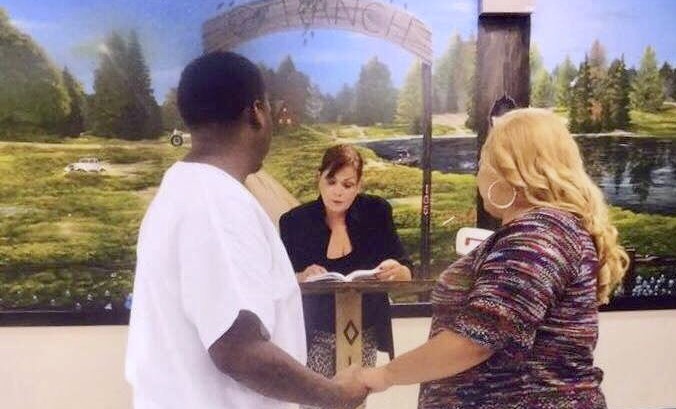
 Looking back at the day I had officiated the marriage ceremony for Priscilla and Joe, I remember that it was a full day of weddings at Sanders Estes and I was struggling with the pain of a kidney stone that I thought was my appendix.
Looking back at the day I had officiated the marriage ceremony for Priscilla and Joe, I remember that it was a full day of weddings at Sanders Estes and I was struggling with the pain of a kidney stone that I thought was my appendix. 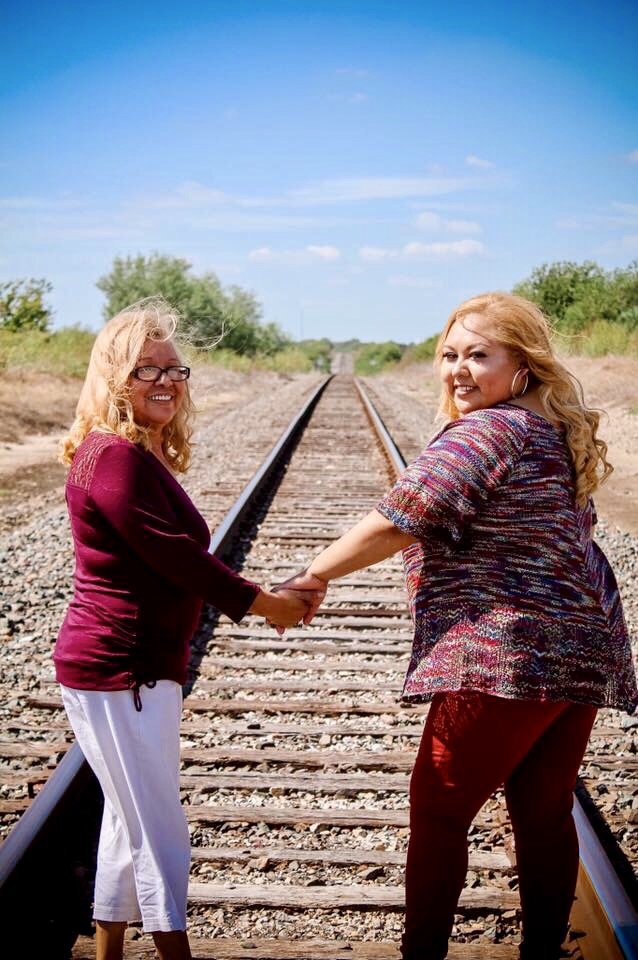 There aren’t any sick days for me officiating Prison Weddings. I had travelled to Estes Unit knowing that I would go to the ER upon my return to Fort Worth.
There aren’t any sick days for me officiating Prison Weddings. I had travelled to Estes Unit knowing that I would go to the ER upon my return to Fort Worth. 
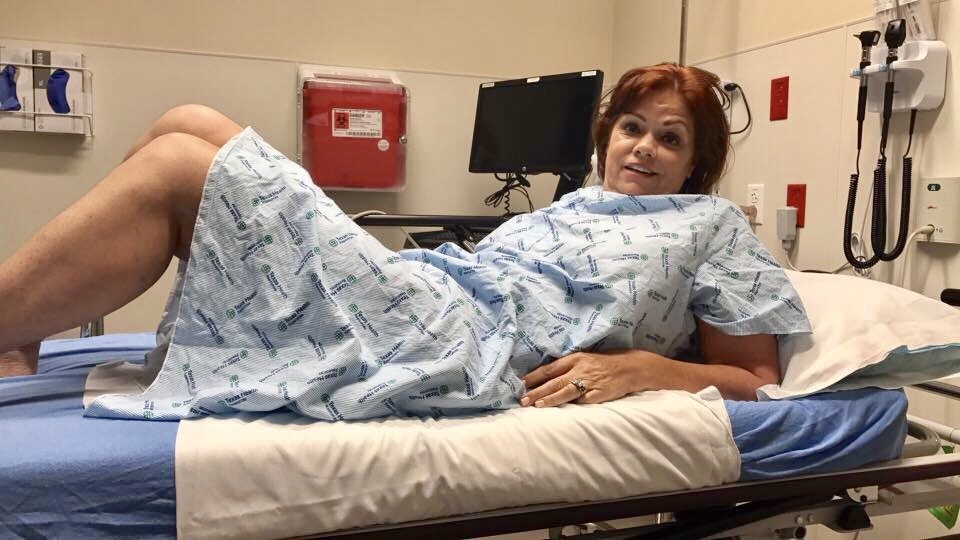 Two days later, due to my rigid schedule, I flew to California to film This Time Next Year with my twin sister, Cindy.
Two days later, due to my rigid schedule, I flew to California to film This Time Next Year with my twin sister, Cindy. 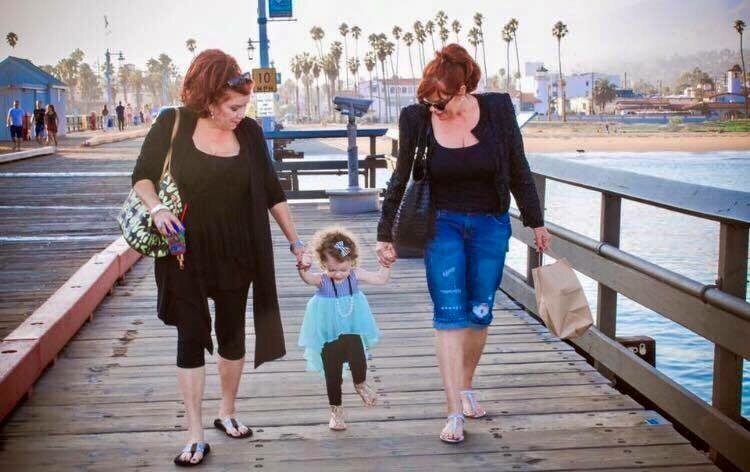
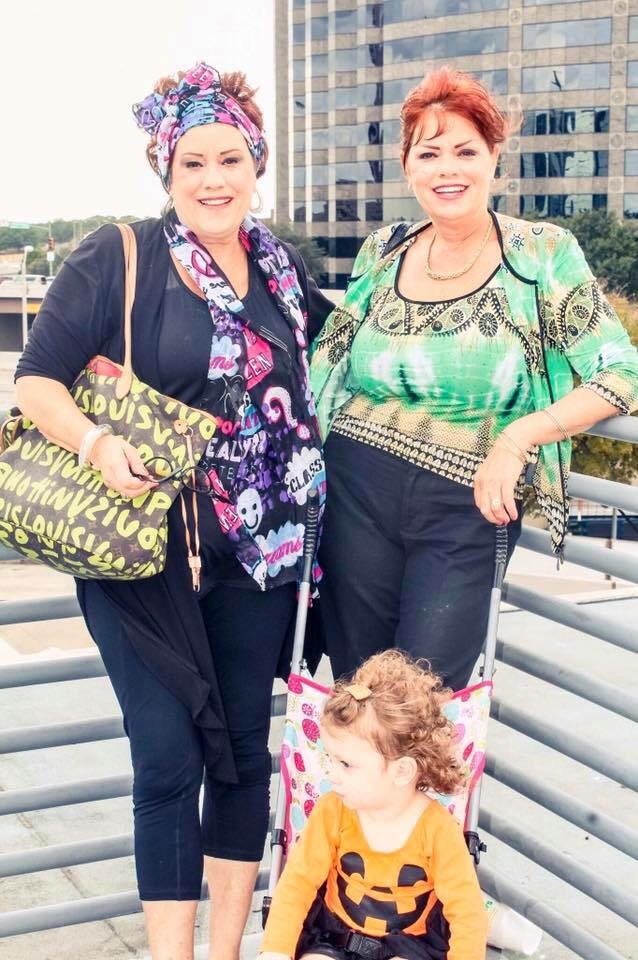 Being sick or in pain didn’t disrupt my schedule. In fact, nothing does. No matter what is going on in my personal life, I show up ready to go to work.
Being sick or in pain didn’t disrupt my schedule. In fact, nothing does. No matter what is going on in my personal life, I show up ready to go to work. 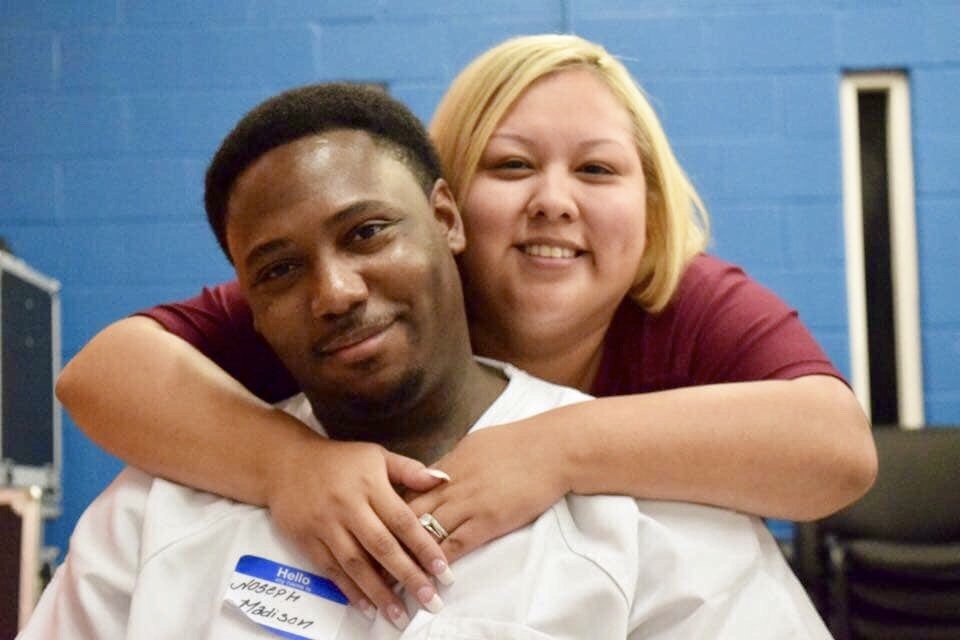 The Walls Unit isn’t normally a location for celebration but, for families awaiting the release of their loved ones, the environment becomes celebratory with many loved ones taking videos and selfies.
The Walls Unit isn’t normally a location for celebration but, for families awaiting the release of their loved ones, the environment becomes celebratory with many loved ones taking videos and selfies. 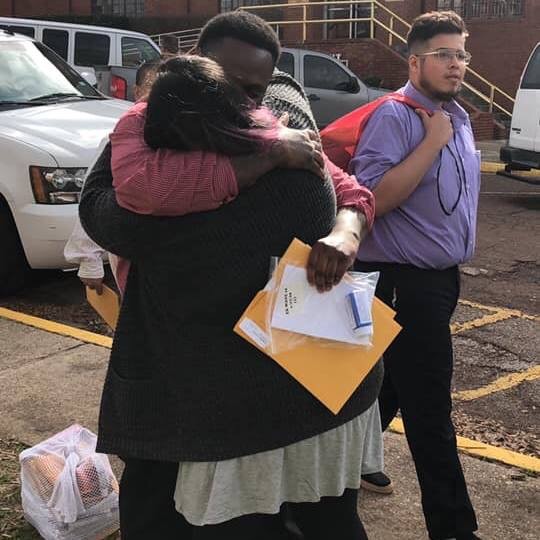
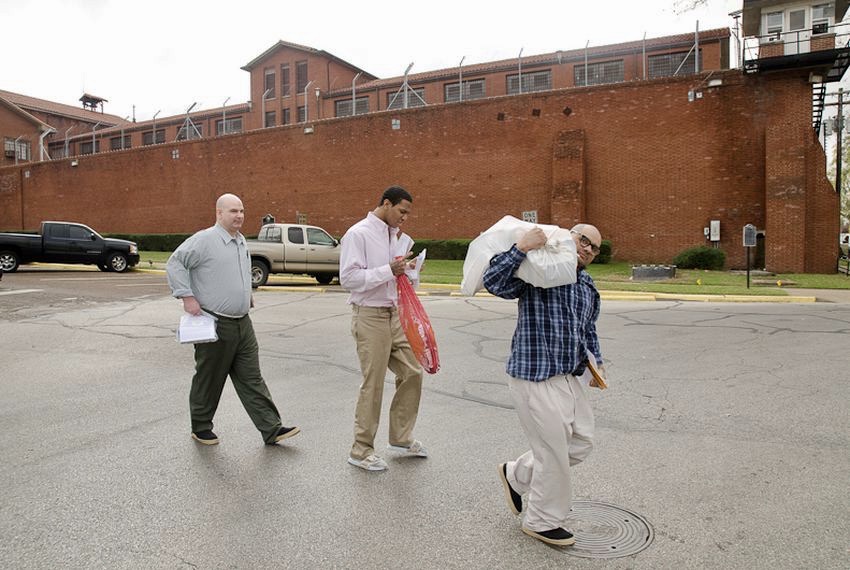 I’m happy that Priscilla found her happily ever after and looking forward to seeing her again in October….
I’m happy that Priscilla found her happily ever after and looking forward to seeing her again in October…. 